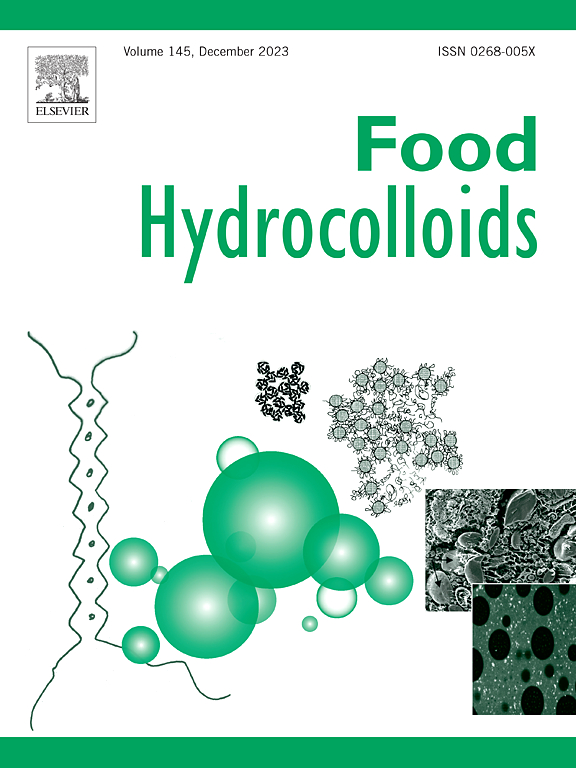Heat-induced dissociation and association of proteins in hempseed protein bodies
IF 11
1区 农林科学
Q1 CHEMISTRY, APPLIED
引用次数: 0
Abstract
Protein bodies (PBs) are naturally occurring storage organelles in seeds. In hempseeds, the major storage proteins, including edestin (11S globulin) and albumin, are primarily located in the crystalloids and proteinaceous matrices of hemp protein bodies (HPBs), respectively. The retention of native PB structures in flours and dry-fractionated protein ingredients has important implications for protein functionality and digestibility, especially when heat treatment is applied during processing. While the thermal behaviour of hempseed proteins has been studied in protein isolate systems, to the best of our knowledge, it has not yet been explored in HPB systems. In this study, we isolated native HPBs using an enzymatic method. Aqueous suspensions of HPBs (4 % protein, w/w) were heated at selected temperatures (60–100 °C) and pH 7 for 20 min, followed by hydrolysis with trypsin at pH 7 and 37 °C for 120 min. The thermal aggregation of proteins in HPBs was characterised using confocal laser scanning microscopy (CLSM) and sodium dodecyl sulphate polyacrylamide gel electrophoresis (SDS-PAGE). The hydrolysis of HPBs by trypsin was monitored over 120 min by measuring the degree of protein hydrolysis (DH) and analysing SDS-PAGE. Aggregation of edestin in HPBs, primarily driven by disulfide bond formation, occurred upon heating, most noticeably at temperatures above 80 °C. Heating increased DH and altered protein degradation patterns of both acidic and basic subunits of edestin. This may be related to conformational changes in the HPB structure resulting from heat-induced dissociation-association of multiple HPB protein fractions, including 11S edestin, 7S globulin, and 2S albumin. These findings contribute to our understanding of the structure-hydrolysis relationships of HPBs, potentially leading to their use as a new plant-based material for food applications.

求助全文
约1分钟内获得全文
求助全文
来源期刊

Food Hydrocolloids
工程技术-食品科技
CiteScore
19.90
自引率
14.00%
发文量
871
审稿时长
37 days
期刊介绍:
Food Hydrocolloids publishes original and innovative research focused on the characterization, functional properties, and applications of hydrocolloid materials used in food products. These hydrocolloids, defined as polysaccharides and proteins of commercial importance, are added to control aspects such as texture, stability, rheology, and sensory properties. The research's primary emphasis should be on the hydrocolloids themselves, with thorough descriptions of their source, nature, and physicochemical characteristics. Manuscripts are expected to clearly outline specific aims and objectives, include a fundamental discussion of research findings at the molecular level, and address the significance of the results. Studies on hydrocolloids in complex formulations should concentrate on their overall properties and mechanisms of action, while simple formulation development studies may not be considered for publication.
The main areas of interest are:
-Chemical and physicochemical characterisation
Thermal properties including glass transitions and conformational changes-
Rheological properties including viscosity, viscoelastic properties and gelation behaviour-
The influence on organoleptic properties-
Interfacial properties including stabilisation of dispersions, emulsions and foams-
Film forming properties with application to edible films and active packaging-
Encapsulation and controlled release of active compounds-
The influence on health including their role as dietary fibre-
Manipulation of hydrocolloid structure and functionality through chemical, biochemical and physical processes-
New hydrocolloids and hydrocolloid sources of commercial potential.
The Journal also publishes Review articles that provide an overview of the latest developments in topics of specific interest to researchers in this field of activity.
 求助内容:
求助内容: 应助结果提醒方式:
应助结果提醒方式:


